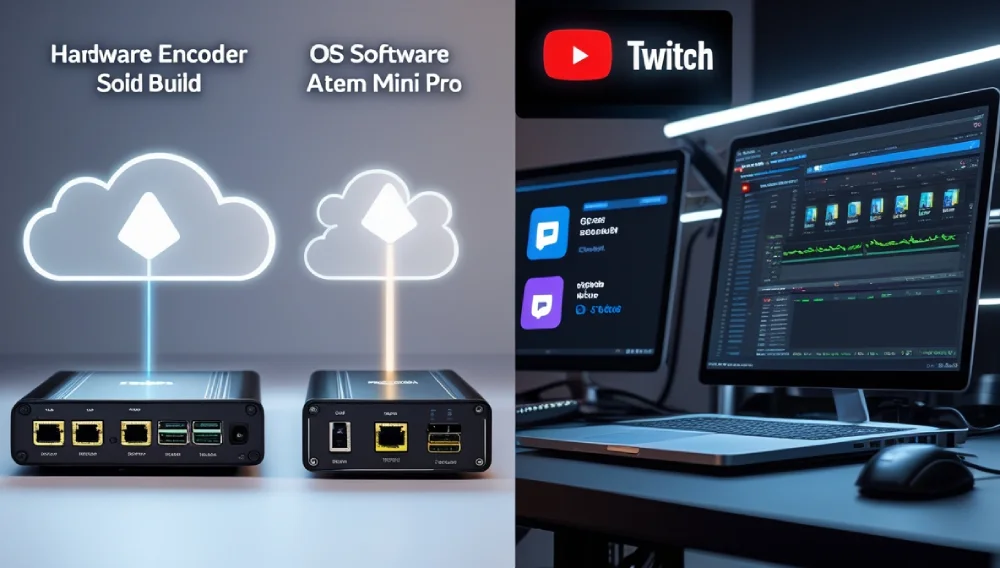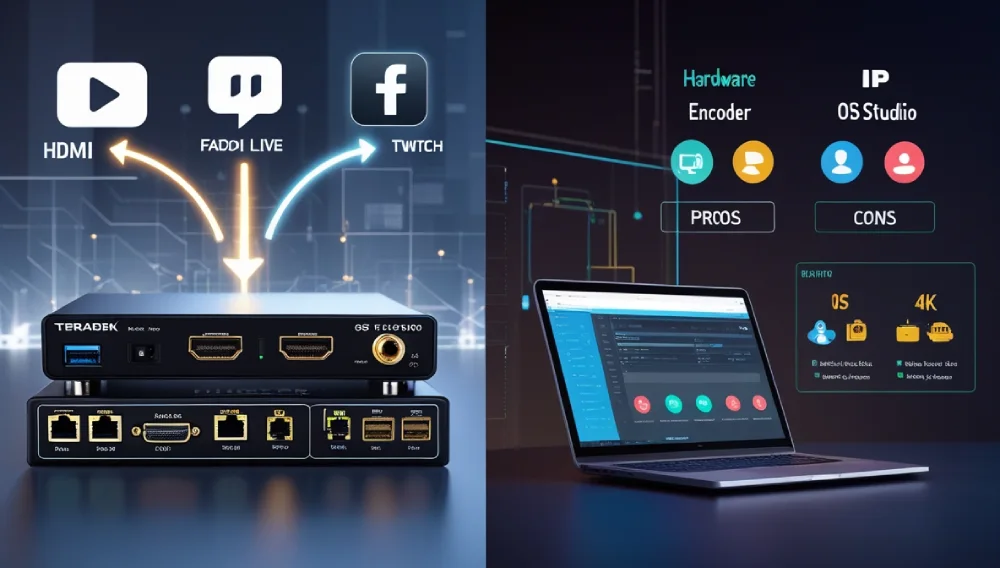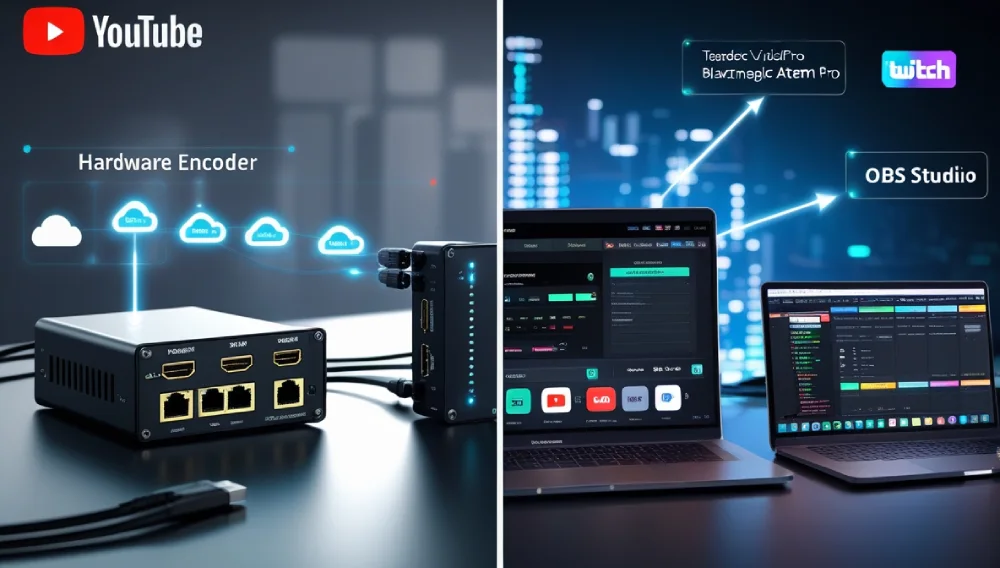Streaming high-quality video content has never been easier, thanks to IP streaming encoders. Whether you’re a content creator, broadcaster, or business professional, an IP encoder can help you deliver smooth, high-definition streams to your audience.
In this guide, we’ll cover:
- What a streaming encoder is
- How it works
- Top product recommendations
- A buying guide
- FAQs
Let’s dive in!

Amazon Newest Arrivals $ 499.00
What Is an IP Encoder?
An IP streaming is a device or software that converts raw video and audio signals into a digital format suitable for streaming over the internet. It compresses the data and sends it to platforms like YouTube, Facebook Live, Twitch, or private CDNs (Content Delivery Networks).
Key Features of a Streaming Encoder
- Converts HDMI, SDI, or other video inputs into a streamable format
- Supports H.264, H.265 (HEVC), and AV1 codecs
- Low-latency streaming for real-time broadcasts
- Multi-bitrate streaming for different devices
- RTMP, SRT, RTSP, and HLS protocol support
How Does an IP Streaming-Encoder Work?
- Video Input – The encoder receives video from a camera, switcher, or other source.
- Compression – It converts the raw video into a compressed format (e.g., H.264).
- Packetization – The video is broken into small data packets.
- Transmission – Packets are sent via the internet to a streaming platform or CDN.
- Playback – Viewers watch the stream on their devices.
Hardware vs. Software Encoders
| Type | Pros | Cons |
|---|---|---|
| Hardware Encoder | More reliable, dedicated processing, low latency | Expensive, less flexible |
| Software Encoder | Affordable, customizable, easy updates | Requires a powerful PC, potential lag |

Best
Here are some top-rated encoders for different needs:
1. Teradek VidiU Pro (Best for Professionals)
✅ Pros:
- 4K HDR support
- Bonded cellular streaming (multiple SIM cards)
- Rugged design for field use
❌ Cons:
- Expensive
- Requires some technical knowledge
2. Blackmagic Design ATEM Mini Pro (Best for Live Productions)
✅ Pros:
- Built-in switcher
- HDMI inputs
- Affordable for its features
❌ Cons:
- Limited to 1080p (no 4K)
- No SRT support
3. OBS Studio (Best Free Software Encoder)
✅ Pros:
- Free and open-source
- Highly customizable
- Works with most streaming platforms
❌ Cons:
- Requires a strong CPU
- Steeper learning curve

Buying Guide
1. Determine Your Needs
- Casual streaming? → Software encoder (OBS, Wirecast)
- Professional broadcasts? → Hardware encoder (Teradek, AJA Helo)
2. Check Video Quality & Codecs
- 1080p vs. 4K – Higher resolution requires more bandwidth.
- H.265 (HEVC) – Better compression but needs more processing power.
3. Latency Matters
- Low-latency streaming (under 2 seconds) → SRT or RTMPS
- Standard latency (10-20 seconds) → HLS
4. Connectivity & Protocols
- RTMP – Most common for platforms like YouTube & Twitch.
- SRT – Best for unstable networks.
- NDI – Great for local networks.
5. Budget
- Under $500 → Software solutions (OBS, vMix)
- 500−500−2000 → Mid-range hardware (Magewell, Blackmagic)
- $2000+ → Professional encoders (Teradek, Haivision)

My Personal Experience
I’ve tested multiple encoders for live events, and here’s what I found:
- OBS Studio is fantastic for beginners but struggles with high-bitrate 4K.
- Teradek VidiU Pro is rock-solid for field streaming but pricey.
- Blackmagic ATEM Mini Pro is the best all-in-one solution for small studios.
For most users, a hardware encoder provides the best reliability, while software encoders offer flexibility.
Frequently Asked Questions (FAQs)
1. Do I need an encoder to stream live video?
Yes, unless your camera has built-in streaming (like some PTZ cameras).
2. What’s the difference between an encoder and a capture card?
A capture card just grabs video, while an encoder processes and streams it.
3. Can I use a smartphone as an encoder?
Yes, apps like Larix Broadcaster can turn your phone into an encoder.
4. Which is better: RTMP or SRT?
- RTMP – Best for stable networks.
- SRT – Better for unreliable connections (e.g., mobile streaming).
5. How much bandwidth do I need for streaming?
- 720p → 3-5 Mbps
- 1080p → 5-8 Mbps
- 4K → 15-25 Mbps
Final Thoughts
An IP streaming encoder is essential for high-quality live video. Whether you choose a hardware or software option depends on your budget and needs.
For most users:
- Beginners → Start with OBS Studio (free).
- Professionals → Invest in Teradek VidiU Pro or Blackmagic ATEM Mini Pro.
Got questions? Drop them in the comments! Happy streaming!
More Blog: hd encoder


1 thought on “The Best IP Streaming Encoder”